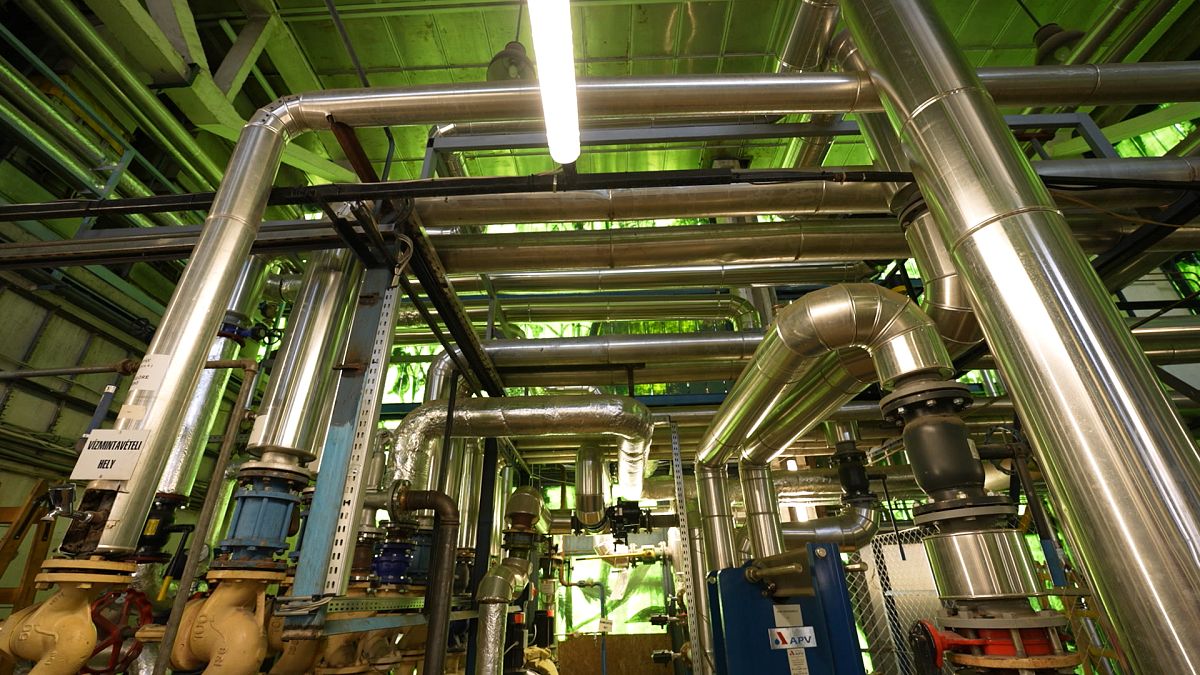Hungary boasts the EU’s largest geothermal system

Hungary is harnessing the power of geothermal energy – it offers numerous advantages as a sustainable energy source and reduces the demand for fossil fuels.
The fight against climate change is gaining momentum in Hungary. The European Union’s largest geothermal system is powering residential and commercial buildings in Szeged, 160 kilometres from Budapest.
Geothermal energy has been used for centuries however this renewable energy resource is gaining renewed attention as a sustainable solution for electricity generation, heating, and cooling applications.
Szeged launched the project after the local district heating provider suggested that geothermal energy could replace the town’s old gas-powered system dating back to the early 1980s.
“The idea is to reduce gas use by around 50 per cent,” said Tamas Medgyes, the Chief Operations Manager at the District Heating Company of Szeged.
Medgyes gave Euronews a tour of the facility. With its network of 27 wells, 16 heating plants, and 250 kilometres of distribution pipes, the new system exploits thermal energy underground and converts it into warm air.
“Szeged gets quite bad air in the winter time. The largest CO2 emitter in the city is the district heating system. This company has operated on natural gas for 40 years. In the last two or three years we have been switching this gas-based system to geothermal,” Medgyes added.
What is geothermal energy and how is it used?
Geothermal energy is generated from the heat at the Earth’s core and is stored in the mantle or the Earth’s middle layer. The temperature difference between the Earth’s core and surface drives a continuous flow of thermal energy from the centre to the Earth’s crust.
The Earth’s crust contains solid rocks, minerals and water, heated to approximately 370°C. To avail of hot geothermal water, engineers must drill holes, sometimes several kilometres deep.
“Geothermal water is a special type of water which is heated by the Earth. So it’s absorbing the heat of the geological area. And when we take it out from the original area, we can use this water for several purposes,” explained Tamas Ezsias, a project manager at MedWater Ltd.
Geothermal water also plays a significant role in agriculture and is even used by the local authorities to melt snow and ice on major roads during the winter months. Its constant temperature also makes it ideal for maintaining optimal conditions in greenhouses.
Szeged’s geothermal heating system is the second largest in Europe after Iceland and the largest in the EU. The project cost approximately €70 million and provides clean, renewable and affordable energy to over 28,000 households and over 400 public buildings in the area.
The European Cohesion Policy provided €23 million of the total budget.
What do consumers say?
If the plan to halve gas consumption works, the District Heating Company of Szeged expects CO₂ emissions to drop by 30,000 tonnes yearly.
Local resident Gabriella Maarne’s home is now powered by geothermal energy, she told Euronews that there weren’t any disruptions during the switchover: “Neither the apartment nor the condominium required any remodelling. The representative of the condominium indicated that drilling would take place, but we never noticed any sign of it,” she said.
Experts say the ‘Szeged model’ could be replicated in other cities, approximately 25 per cent of the EU’s population lives in areas with sufficient geothermal resources.
Ultimately, this renewable resource has proven its versatility and potential for meeting Hungary’s energy needs while helping the EU diversify its energy sources and reduce its dependence on Russian gas imports.
Source: Euro News














